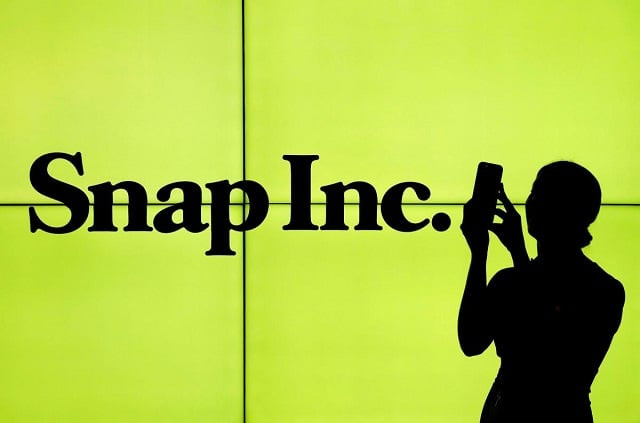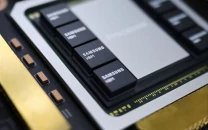Snap's strategy shifts win over advertisers more than users
Analysts expressed concern that advertisers and users prefer Facebook’s Instagram app over Snapchat

A woman stands in front of the logo of Snap on the floor of the New York Stock Exchange (NYSE) while waiting for Snap to post their IPO, in New York City, New York, US on March 2, 2017.
PHOTO: REUTERS
The social media company said its shift toward a self-serve model for advertisers was paying off and blamed a redesign of its app for denting user numbers. Still, analysts expressed concern that advertisers and users prefer Facebook’s Instagram app over Snapchat.
Snap picked up a big backer in Saudi Arabia’s Prince Alwaleed bin Talal, who announced soon after the second-quarter results he had bought a 2.3 per cent stake for $250 million in May. He said in a statement Snap had just begun to “scratch the surface of its true potential.”
Shares in Snap were flat in after-hours trading following volatility that saw them fall briefly before surging more than 12 per cent.
Snap hires Amazon veteran Tim Stone as CFO
The company has shifted over the last year to primarily selling ads through self-service, automated auctions rather than direct sales. That has come at the cost of the premium feel Snap had tried to ascribe to its ads but given overall sales a jolt by attracting more advertisers.
Snap has been able to boost sales volumes by competing with bigger services on price. Prices fell 9 per cent in the second quarter compared with the previous quarter and 52 per cent from a year ago.
“It gives an incredible opportunity for advertisers to come and win on our platform,” Chief Strategy Officer Imran Khan told analysts on a webcast on Tuesday.
With self-service ads, Snap has been able to grow revenue in regions such as Australia and the Middle East, where direct sales efforts are more limited and advertisers have few other options to market to its mainly 18-34-year-old users.
Snap also has been redesigning its app to encourage users to interact with more of its ad-supported videos.
Its global revenue was $262 million in the second quarter, beating the Reuters estimate of $250.43 million, as average revenue per user surged to $1.40 from $1.05 a year ago.
Snap forecast third-quarter sales of $265 million to $290 million, up 27 per cent to 39 per cent from a year earlier, compared with 44 per cent revenue growth in the second quarter.
Daily Snapchat users fell to 188 million in the second quarter from 191 million in the prior quarter. Snap had never before logged a quarterly drop in daily users, according to data it has released going back to 2014.
Snap lost about 1 million users in each of its three geographic reporting regions: North America, Europe and rest of world.
Analysts on average expected Snap to gain nearly 2 million users in the second quarter from the first.
The company cautioned that usage tends to slow in the third quarter, but did not make a specific forecast.
App redesign haunts Snapchat
Earnings from Facebook and Twitter in recent weeks spooked social media investors by showing issues around data privacy, abusive content and phony accounts were weighing on user growth. Both companies shed some 19 per cent in market value after reporting.
But some analysts on Tuesday brushed off Snap’s user drop, saying that Snapchat always had more limited appeal than larger rivals.
“It’s always going to be a niche platform, so the modest change isn’t very remarkable,” said Pivotal Research’s Brian Wieser.
Snap executives told analysts that the redesign was the primary reason for usage slipping and that a European Union data protection law that spurred changes to user privacy terms had no material effect.
Users on average continue to spend more than 30 minutes on Snapchat each day, executives said.
Snap said ending leases in Venice, California, to consolidate offices a few miles north in Santa Monica cost it $3.9 million in the second quarter and would result in total expenses of $25 million to $45 million in 2018, mostly in the current quarter.
Employees had griped about Snap’s network of small, spread out offices in Venice.



















COMMENTS
Comments are moderated and generally will be posted if they are on-topic and not abusive.
For more information, please see our Comments FAQ